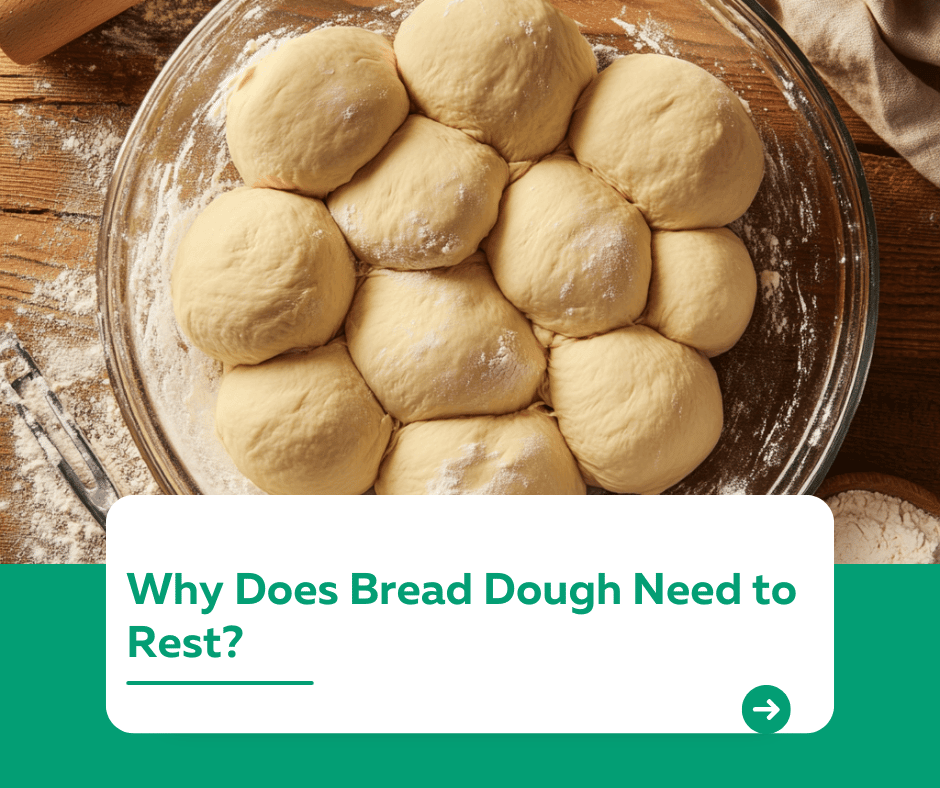
Introduction
“Why does bread dough need to rest?”
Resting dough, whether during proofing or after kneading, is a critical step in bread-making. It may seem like a waiting game, but it’s during this period that essential processes occur, transforming simple ingredients into fluffy, flavorful bread. In this article, we’ll uncover why resting dough is so important and how it affects the final loaf.
1. What Happens When Bread Dough Rests?
Resting dough allows several key processes to take place:
- Gluten Development:
- Kneading activates gluten, which provides structure to the dough.
- Resting lets gluten strands relax and strengthen, ensuring the dough is elastic yet manageable.
- Fermentation:
- During resting, yeast consumes sugars in the dough, releasing carbon dioxide.
- This creates air pockets, making the bread light and airy.
- Flavor Development:
- Longer resting times allow for deeper, more complex flavors to develop.
Fun Fact: Resting is often referred to as “proofing” or “rising” in bread recipes.
2. Types of Resting Periods in Bread-Making
- Bulk Fermentation:
- The initial rest after kneading, allowing the dough to double in size.
- Essential for gluten and flavor development.
- Bench Resting:
- A short rest after shaping, allowing the dough to relax before final proofing.
- Helps achieve better shape and texture in the final loaf.
- Final Proofing:
- The last resting period before baking.
- Ensures the dough reaches optimal size and readiness for the oven.
3. Why Is Resting Time Important?
- Texture Improvement:
- Resting creates a softer crumb and better structure, preventing dense or tough bread.
- Easier Shaping:
- Rested dough is more pliable and easier to handle, reducing tearing.
- Flavor Enhancement:
- Longer fermentation results in richer, more nuanced flavors.
Pro Tip: Be patient—rushing the resting process can lead to flat, flavorless bread.
4. How Long Should Dough Rest?
Resting times vary based on the recipe and type of bread:
- Quick Breads: Minimal resting, often just a few minutes.
- Yeast Breads: Typically 1–2 hours for bulk fermentation, plus additional time for proofing.
- Sourdough: Longer resting times, often overnight, for optimal flavor and texture.
Tip: Follow your recipe closely and adjust resting times based on room temperature and dough activity.
5. Troubleshooting Resting Dough
- Dough Doesn’t Rise:
- Check yeast freshness and ensure the resting environment is warm enough.
- Overproofed Dough:
- Overproofing can cause the dough to collapse. Use a finger-poke test to check if it’s ready—gently press the dough, and it should spring back slowly.
Conclusion
Resting bread dough is a vital step in the bread-making process, allowing gluten to develop, yeast to work its magic, and flavors to deepen. By understanding why resting matters and how to do it correctly, you’ll bake bread with better texture, flavor, and appearance every time.
For more baking tips and techniques, visit our Kuestion.com.